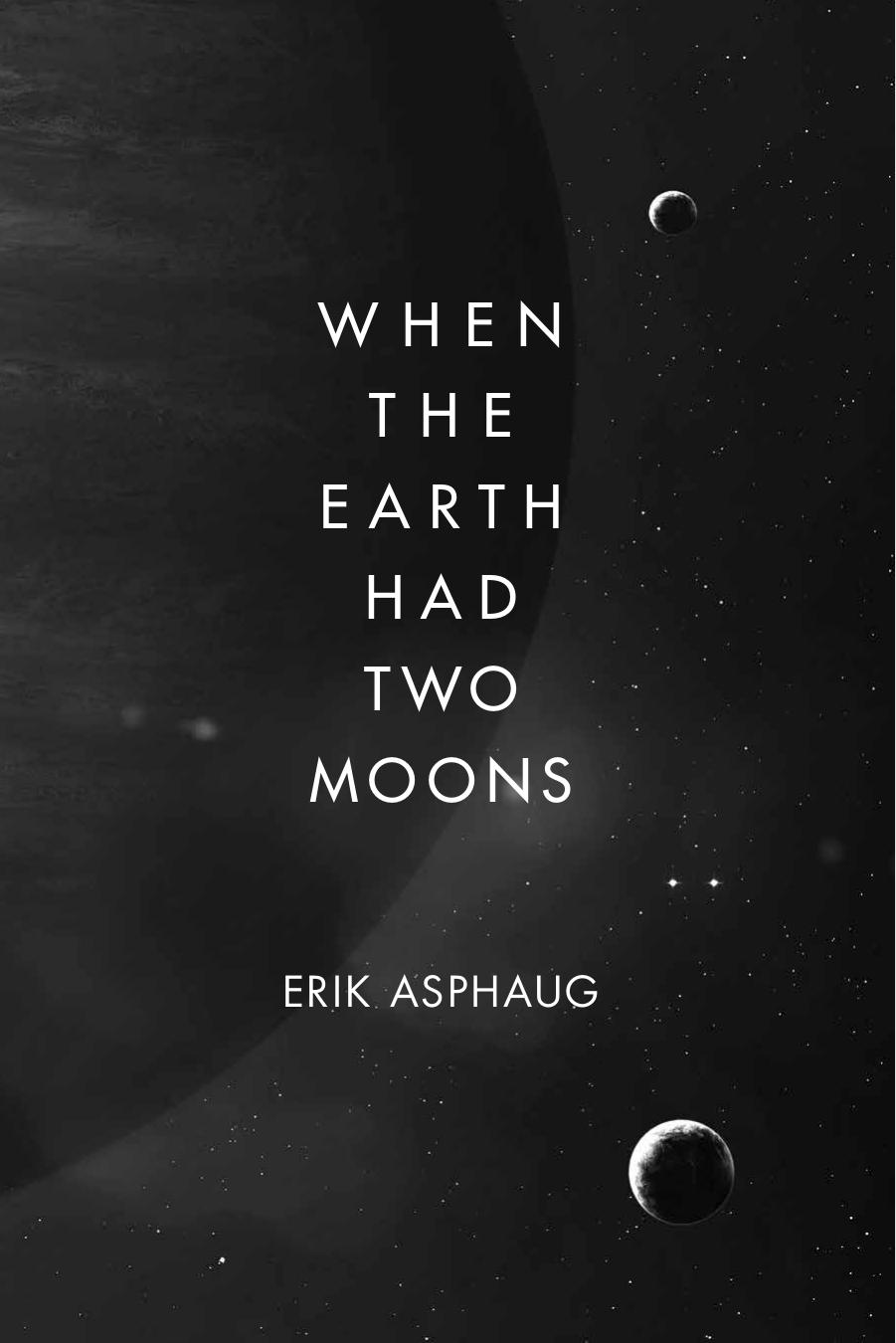When the Earth Had Two Moons by Erik Asphaug

Author:Erik Asphaug
Language: eng
Format: epub, pdf
Publisher: HarperCollins
Published: 2019-09-16T16:00:00+00:00
THAT’S THE MODERN picture for interpreting the cosmochemistry of meteorites: they are samples from the Main Belt, or what’s left of it, for the most part. But until the 1800s meteorites were thought to be atmospheric phenomena4 (Greek meteoron = out of the air). They have been venerated as sacred objects throughout history and prehistory, and iron meteorites have been used to make knives and daggers throughout the world. One early scientific idea for the origin of meteorites was that they were erupted out of volcanoes and flew hundreds or even thousands of miles until crashing back down. In 1864, a primitive black stone exploded into fragments high above the town of Orgueil in the Pyrenees, and fragments weighing up to 14 kilograms were recovered before the rest of the soft object disappeared into the soil and vegetation, becoming part of the earth. Orgueil was the first meteorite subject to widespread scientific attention, in part because analytical science was ready for it, but in part because the fresh fragments were so strange and smelled like peat, like organic matter. Where did it come from?
The Earth rams through the tail of Comet Tempel-Tuttle in this woodcut of the famed Leonid meteor shower of 1833 that startled everyone but caused no damage and produced no meteorites. The effect is like driving into a snowstorm.
Woodcut by Adolph Völlmy (1889)
Download
This site does not store any files on its server. We only index and link to content provided by other sites. Please contact the content providers to delete copyright contents if any and email us, we'll remove relevant links or contents immediately.
| Aeronautics & Astronautics | Astronomy |
| Astrophysics & Space Science | Comets, Meteors & Asteroids |
| Cosmology | Mars |
| Solar System | Star-Gazing |
| Telescopes | UFOs |
Tools of Titans by Timothy Ferriss(8304)
Turbulence by E. J. Noyes(7978)
Secrets of Antigravity Propulsion: Tesla, UFOs, and Classified Aerospace Technology by Ph.D. Paul A. Laviolette(5333)
Astrophysics for People in a Hurry by Neil DeGrasse Tyson(5151)
Room 212 by Kate Stewart(5071)
Design of Trajectory Optimization Approach for Space Maneuver Vehicle Skip Entry Problems by Runqi Chai & Al Savvaris & Antonios Tsourdos & Senchun Chai(5037)
Pale Blue Dot by Carl Sagan(4954)
The David Icke Guide to the Global Conspiracy (and how to end it) by David Icke(4657)
A Journey Through Divination and Astronomy by Publishing Pottermore(4363)
Goodbye Paradise(3761)
Apollo 8 by Jeffrey Kluger(3668)
COSMOS by Carl Sagan(3589)
The Five People You Meet in Heaven by Mitch Albom(3520)
Losing the Nobel Prize by Brian Keating(3518)
How to Read Water: Clues and Patterns from Puddles to the Sea (Natural Navigation) by Tristan Gooley(3433)
Brief Answers to the Big Questions by Stephen Hawking(3393)
How to Read Nature by Tristan Gooley(3292)
The Order of Time by Carlo Rovelli(3162)
A Brief History of Time by Stephen Hawking(2992)
